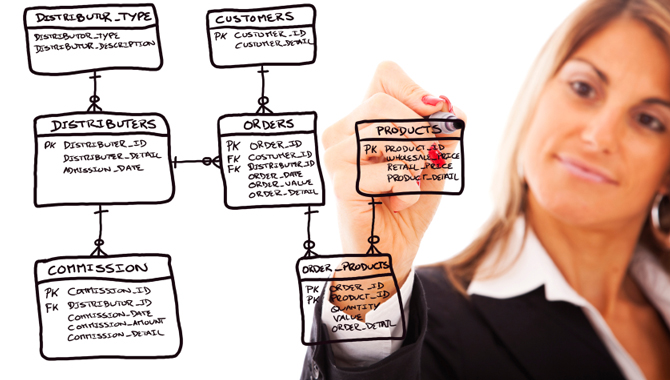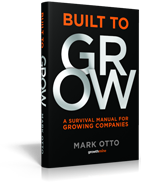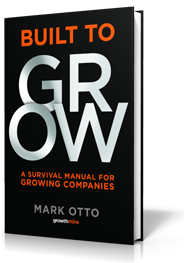
The Leading Killer of Successful Businesses

The shift from growth to decline is almost imperceptible at first, particularly by those inside an organization. After all, the organization still looks and feels successful. But the signs are there if you know what to look for. Slowly, the business has lost the creativity, risk taking, initiative, and flexibility that made it successful in the first place.
Decline is a disease. Left untreated, it gets progressively worse and ends in death. In the early stages of decline, it’s harder to detect and easier to cure. In the latter stages, it becomes easier to detect and harder to cure. Like any disease, decline can grow inside an organization while it still looks strong, healthy, and vibrant on the outside. That’s what makes decline so scary. Once the symptoms become obvious, you are already in trouble.
Decline begins when everyone least expects it – at the pinnacle of success. The initial signs of decline don’t show up in financial reports. In fact, when it begins, most companies are growing, have large cash reserves, and strong financial statements. Momentum carries the organization forward. When the signs appear in financial statements, decline is already well under way.
When an organization starts to decline, the first signs appear as changes in the attitudes, views, opinions, and behaviors of its leaders. The leaders slow down and become comfortable. The organization no longer pushes itself to do more. There are reduced expectations for growth. Open and honest debate is less common. Change is avoided. Politics become an issue. How things are done begins to matter more than what is being done. The status quo is accepted – people begin to accept things as they are.
Businesses entering decline have been feeling confident and content for some time. Complacency and even arrogance set in. The organization develops an “if it ain’t broke, don’t fix it” mentality. It becomes difficult to generate enthusiasm and excitement for new ideas. The organization begins to shift away from exploring new opportunities toward maintaining what they worked so hard to gain.
Gradually, the business begins the slow march towards death, losing touch with the market and its customers and becoming internally, rather than externally focused. ROI becomes more important than R&D. As time passes, the entrepreneurial types, the visionaries, and risk takers all begin to leave. The remaining employees, who either cannot or will not see the need for change, allow the business to slowly sink under the weight of its own inertia.
How Does a Business Get Here?
In theory, successful businesses should be able to remain so indefinitely. In practice, the slide into decline happens for understandable, but unfortunate reasons.
When a company is growing rapidly, it adds systems and processes to help control the chaos. After all, the whole purpose of systems and process is to help an organization deal more effectively with complexity. But when a business becomes over-managed and over-systematized, it slows down, loses flexibility, and focuses inward instead of outward.
An over-managed organization becomes rigid and bureaucratic. Getting things done becomes a difficult and convoluted process.
Filling out forms and endless analysis become more important than productivity and actual results. While management still calls for growth, they are increasingly more concerned with how something is done rather than what is being done. Is the process flowchart being followed? Have the steps for this and that been completed? The business seems like it has been reduced to a series of checklists.
Loss of Entrepreneurship
Entrepreneurship is the driving force behind the company’s success. But it doesn’t take long before the driving force is lost. During rapid growth, systems and processes provide an environment for entrepreneurship to thrive. In a declining company, systems and processes begin to slowly choke entrepreneurial activity to death.
Recovering From Decline
To turnaround a business sliding into decline, entrepreneurship must return as the lifeblood of the company. And that means the organization must focus on hiring and developing entrepreneurial (or intrapreneurial) employees and managers.
Creating new growth requires completely different mindsets, skills, and strategies than those necessary for managing the current business. Launching new initiatives into uncertain territory is fundamentally different from running a well-established business.
All of this requires that you actively shape the corporate culture to amplify the entrepreneurial qualities of innovation, flexibility, risk-taking, and initiative. It’s critical that these are not drowned out by the increasing noise associated with the size, scale, and scope of a large company.
You must do everything possible to stimulate and support entrepreneurship as a mindset and cultural component throughout the organization.
Remaining Balanced
Systems and processes aren’t really the problem. The problem is the loss of the delicate balance between control and flexibility.
Business success rests on the ability to balance the capabilities necessary to excel at both growth and execution. Companies that consistently grow have figured out how and where to enable and promote entrepreneurial behaviors while, at the same time, maintaining systems and processes that allow for scalability, consistency, and profitability.
Any imbalances need to be addressed while accepting that the tension between managing an organization for growth and managing it for control never entirely disappears. Growth companies don’t try to eliminate this natural tension – they manage it every single day.
Does your business have any signs of decline?





